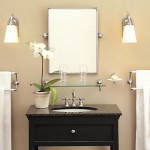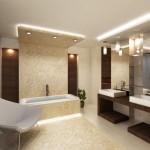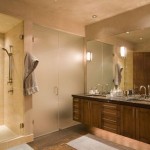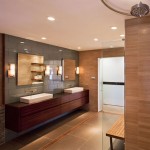Bathroom Lighting Tips
Vanities and Lays
The space between the lay and the wall is one of the most critical but least forgiving areas for bathroom lighting. People must be able to see the lay or vanity as well as themselves in the mirror above. To do this, the fixture must illuminate the person's face. Fixture above the mirror is the simplest solution . This is also the worst, since the fixture throws light downward onto the person's face, causing shadows below the eyebrows, nose and chin—just what you don't want when shaving or putting on makeup. A much better approach is to locate sconces or better — strip lighting at the sides of the mirror, where they can light the face more evenly. Two fluorescent tubes mounted behind a valance above the mirror can also work by bouncing light off the wall before it hits the person's face. But the wall must be white or near-white and even then might not be as effective as side-mounted fixtures.
Showers, Tubs ad Toilets
A pleasing and economical way to illuminate the small sub-spaces of a bathroom is directly through their walls. Glass blocks or obscure (patterned) glass in these walls enable the enclosed space to borrow light from the main space. If this isn't feasible, these spaces can usually be well lit with a single ceiling fixture, recessed or surface mounted. Many exhaust fans contain a lamp. If your design includes a separate lighting fixture over a wet area, make sure it is a water-resisting type
Your client may want a heat lamp in the bath. If you include one, locate it in the ceiling above an open area with enough room for the person standing below it to move about. Because heat lamps consume a lot of electricity, they should always be switched separately from other fixtures. The NKBA recommends heat lamps be wired to a separate circuit and connected to a timer switch
Ambient lighting
If you provide adequate light at the mirror and bathing areas you may not need any other lighting in a bath. If you do, consider a recessed ceiling fixture or two, or wall sconces




